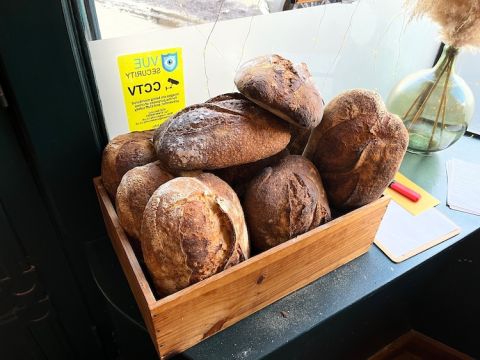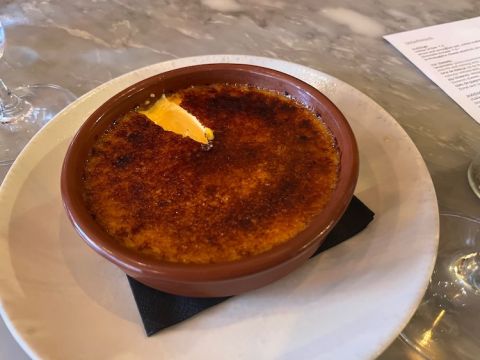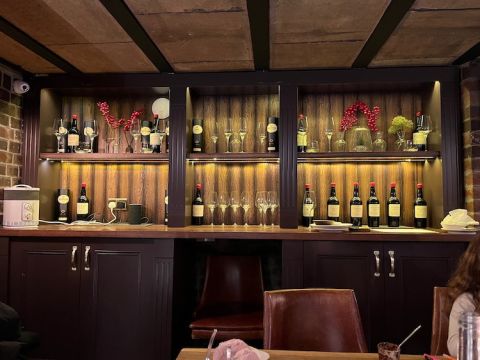Bristol has a long association with food and wine.
Thanks to its harbour and mercantile tradition, it has probably been the conduit for more barrels of bordeaux and sherry than any other English port. Averys and Harveys established their important wine businesses there. The Bristol Wine Fair was a significant event in my early days as an aspiring wine importer.
Frank and Aldo Berni began their eponymous steak houses here in 1955. I can still remember a dinner at the late Keith Floyd’s restaurant in the mid 1970s when he was cooking wonderfully well, before he became a famously bibulous TV presenter.
Today, although the chains dominate the restaurant scene in Bristol, as everywhere else, there are numerous good, independent places to eat and drink. Perhaps this is due to the number of keenly interested food and drink writers who populate this city. With rents far less than in the capital, and yet only an hour and a half away by train, there does seem to be a far heavier concentration of these professionals here than in any other British city.
On my first long stay here (well, four nights) I was charmed by this city, if not by its weather (it rained heavily for three of our four days over New Year’s Eve). I also learned that, because of its many hills, distances are not to be trusted. The two miles from our base to our first restaurant one lunchtime turned out to be via several steep hills, the exposed Clifton Downs where it absolutely poured down, and a roundabout that appeared to be predominantly a small round of concrete and grass surrounded on all sides by massive puddles. Happily, this was no more than a couple of hundred yards from our lunch which, by then, we felt we fully deserved.
2b North View, aka Little French restaurant, has been the professional home to chef Freddy Bird and his wife, Nessie, for the past four years. It wears the air of a cared-for, family-owned restaurant – of the kind that used to be common in France for many years. For example, right by the front door there is a wooden box piled high with freshly baked sourdough loaves: a more evocative welcome sign I have yet to see.
Having been made welcome, and our extremely damp coats taken from us (with my cap subsequently returned dry and warm!), we were seated and shown the menu and wine list. The latter opened with the very encouraging phrase, ‘At little french we write the wine list first and the menu follows…..we hope that you get as immersed in it as we have.’
Which we did, although first of all there was the challenge of us both drying out. Nothing evokes the inner warmth of France for me than a glass of pastis, which I ordered along with a martini for Jancis who said she ordered it in memory of all the martinis enjoyed at New Year with Johnny and Betsey Apple and Simon Hopkinson chez the late Bill Baker. Both drinks achieved their purpose.
We both then moved firmly into very French territory. Jancis ordered an item from the bar snacks, described as a pigs' cheek terrine that was not really a terrine but a small, deep-fried treat, but this was compensated for by a perfectly executed sauce gribiche with real bite. I continued the theme with a dish of lambs’ sweetbreads, pig’s trotter, Alsace bacon and madeira that was excellent. All the various ingredients had been very well cooked, individually and then together, and the sauce managed to be both sticky and sweet, the perfect foil for the fine sourdough bread.
Jancis then went fully French, ordering a glass of 2017 Alsace Grand Cru Riesling from Domaine Schlumberger alongside a plate of ‘raviole de Dauphine’, the cheese-filled pasta that is a speciality of the Drôme and Isère, a dish that came topped with a generous helping of grated black truffles with an excellently dressed salad of chicory, candied walnuts and roquefort. I went slightly left field. I saw that the couple at the next table had ordered the queen scallops with a Sauternes butter sauce as their first course and ordered this as my main course because I believed that it would make a very good combination with a side dish of aligot potatoes, the creamy mixture of mashed potatoes, garlic and cheese that is the dish of the Aubrac region of the Massif Central. Whatever the reason – the hard work of the masher or the age of the dish in which it was served – this combination worked very, very well. With this I drank a glass of Ch Guibeau 2016 from Bordeaux’s right bank.
Little French’s list of puddings is brief – chocolate mousse, crème brûlée and a prune-and-armagnac tart plus La Fromagerie cheeses. From this I ordered the crème brûlée, two spoons and a glass of sweet wine from Sardinia – Audarya's Bisai, a deep golden wine made from overripe grapes.
Apparently, when this restaurant first opened Bird was criticised for serving too large portions (not a bad criticism for any chef!) and with his crème brûlée he does not seem to have changed. But with a top still warm from the salamander, and the custard underneath rich but not sickly, this proved the perfect dessert to be shared between us. When asked, Bird confessed that there are no secret ingredients. ‘Just the best Cacklebean eggs, top-quality vanilla and the best cream.’ (With one coffee, my bill came to £127.44 for two including service).
Lunch the following day presented a different challenge (it was still raining!). We would be 10, including four children. The perfect solution came via a bank vault (originally manufactured in Northern Ireland) in the basement of Bar 44 tapas bar in an old bank in Clifton and the ministrations of our experienced and thoughtful waiter.
This is the English outpost of Owen Morgan’s restaurant empire that he has built on his passion for sherry and his position as a sherry educator for the DO Jerez Consejo. In an interview he described the lessons he learned when he opened his first restaurant in Wales in 2002, the year he graduated from university. ‘I could talk to you all day about that. To say it was a steep learning curve is an understatement: I lost three stone in the first three months. Every day started at six am and finished at two am; we were the sole chefs, baristas, bartenders, cleaners, pot washers, bookkeepers, door staff, and every other role you could think of in a bar/restaurant. I learned more in one year than in my entire academic life!’
The situation today is much, much calmer. Visually, the interior shouts Morgan’s passion for sherry: the shelves lined with bottles of sherry, the walls covered in posters of Tío Pepe. And the menus are very comprehensive.
Best of all are the childrens’ menus which are colourful, clearly laid out and keenly priced. Down the left-hand side are drinks and kids' cocktails while opposite is a list of 11 tapas, priced in the most friendly fashion: four items for £4; five for £5 and six for £6, and below are three desserts. All were carefully prepared and equally well appreciated.
We began with a sunshine triangle and a Solera 44, two flights of three 50-ml glasses of Tío Pepe, manzanilla and Colosia fino (£10) sherry for me and three glasses of amontillado, palo cortado and oloroso (£10.50), which brought instant smiles to our faces. These were only increased by the quality and generosity of the tapas: creamy croquetas; spicy padrón peppers; a rich rice dish topped with cods’ cheeks; spicy but not too spicy slices of good-quality chorizo sautéed in Galician cider and mopped up with their good bread. The only slightly disappointing dish was their tortilla. Their salty chocolate mousse is not to be missed however. (My bill for six adults and four children, including 10% service, came to £258.50).
Thanks to New Year closures and the low average age of our party, we were able to try only a small selection of what Bristol independents have to offer. And in Spicer+Cole, equally independently owned, there are five excellent sites around the city for that essential coffee.



















